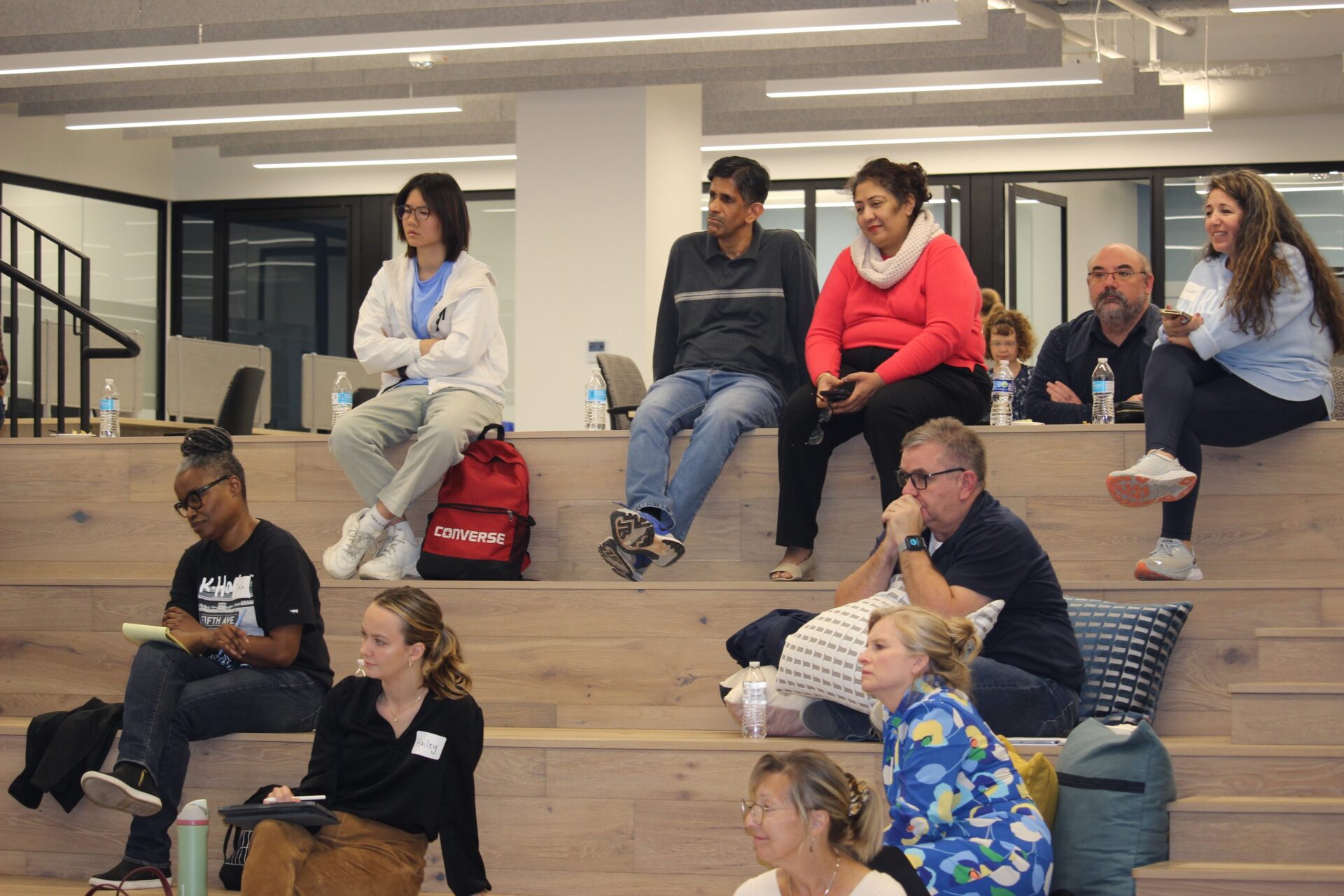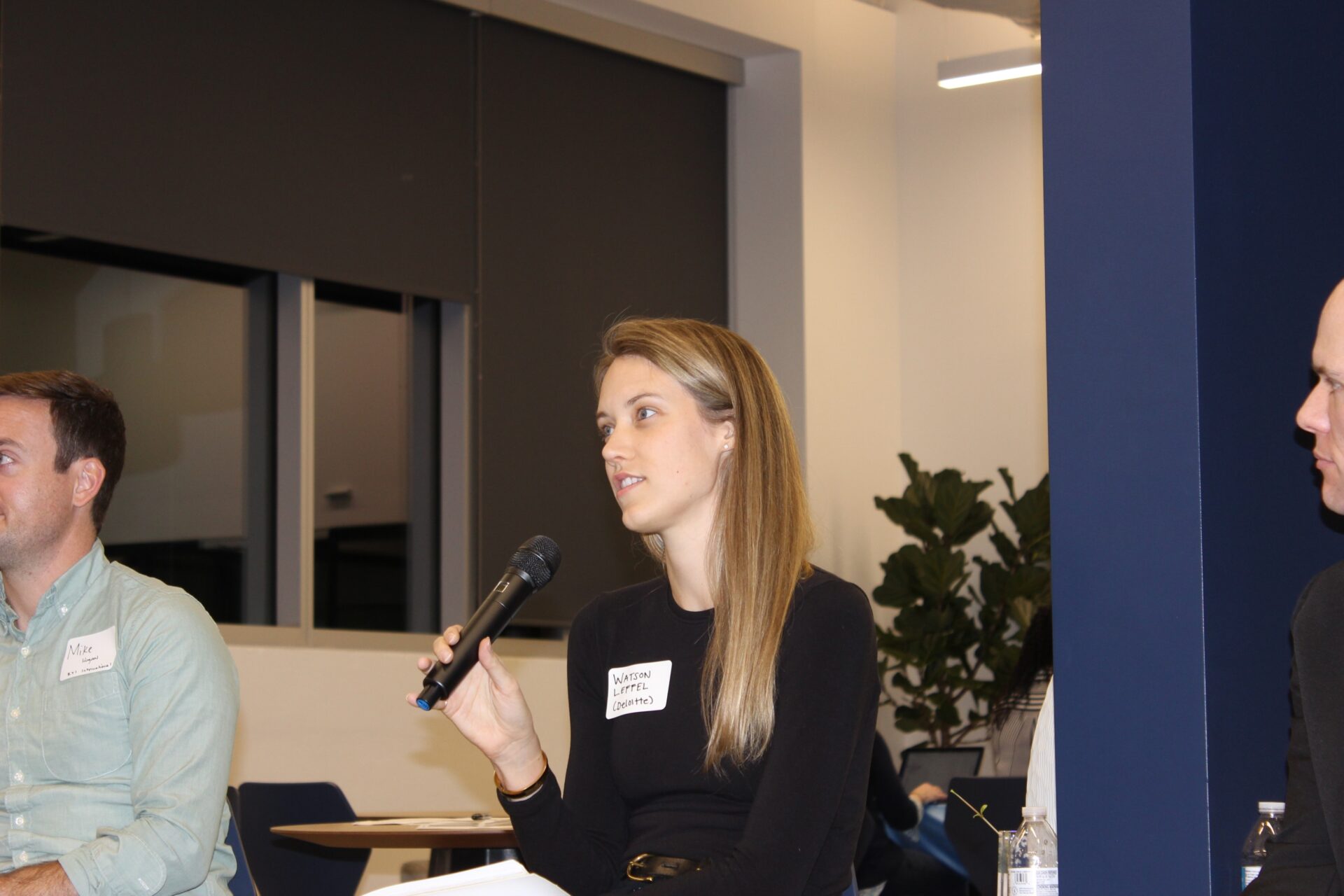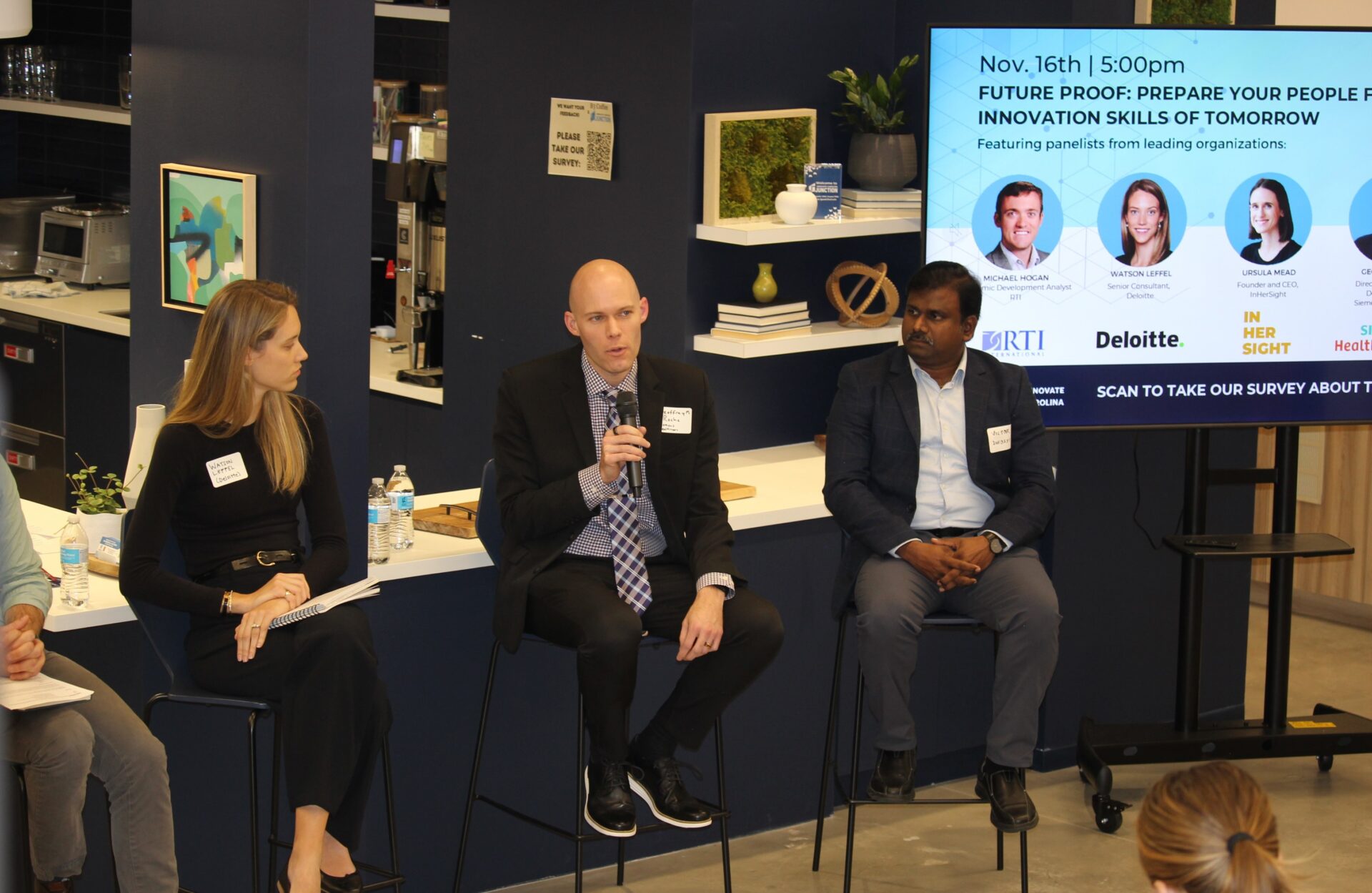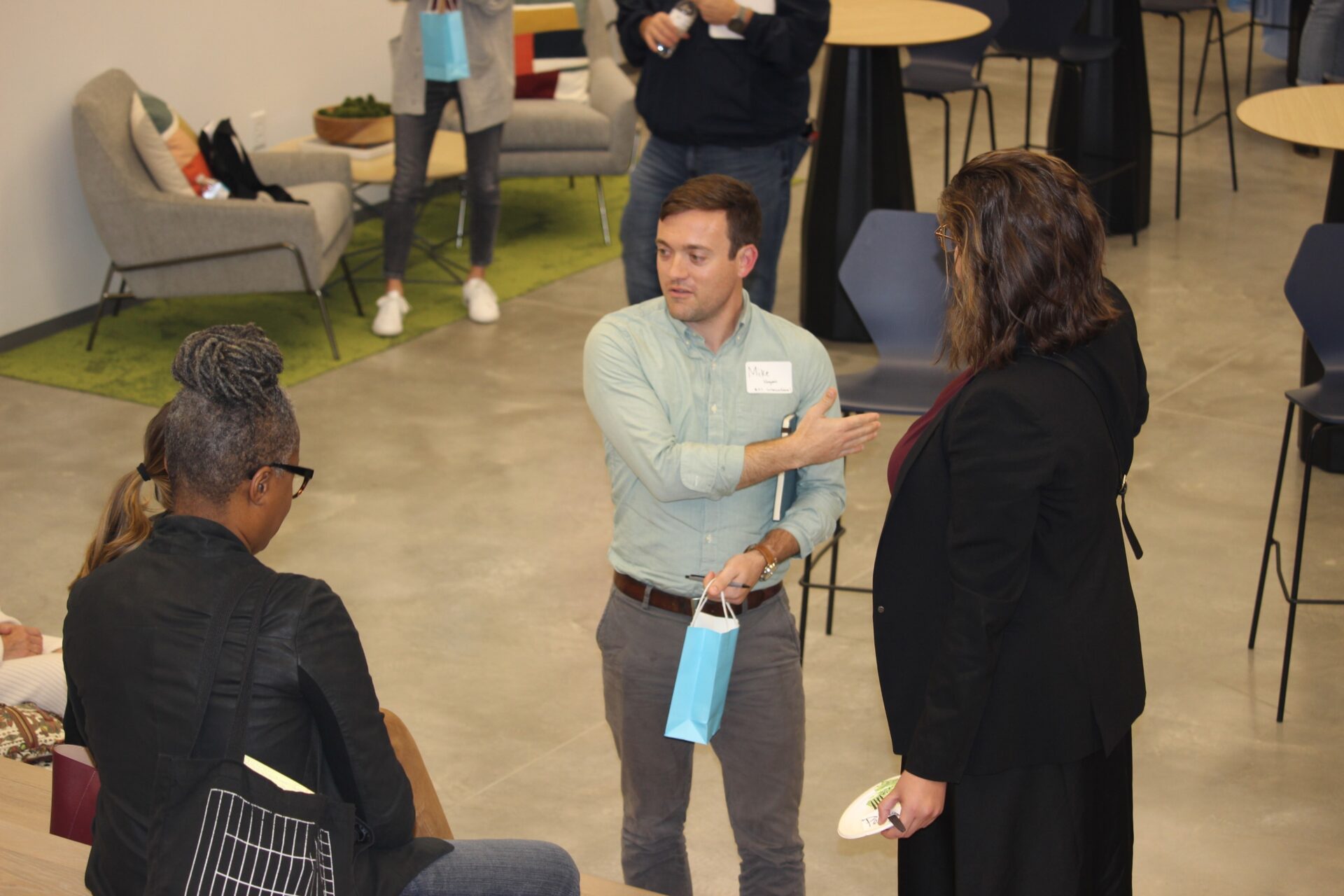

To thrive in the future of work, organizations and people across all industries will need to build skills for jobs that don’t yet exist. Continual learning, upskilling and reskilling will be the norm. What skills will employers look for? How can employees of today avoid professional skill extinction and transform themselves into the in-demand talent of tomorrow? And what steps should employers take now to start cultivating the talent they’ll need to compete in the years ahead?

If talent is the currency of innovation, smart organizations and employees understand that investing in learning and development today pays future dividends at the individual and enterprise level. To explore rapid shifts occurring in the workforce and strategies for preparing talent for the future of work, a panel of industry leaders convened at UNC-Chapel Hill’s Innovate Carolina Junction for a conversation titled “Future Proof: Innovation Skills of Tomorrow.” Panel moderator Ursula Mead, CEO and Founder of InHerSight, led an interactive discussion with other experts in the field, including:
In part two of their discussion, the group turned its attention to how organizations can develop their current and future employees. Find out what they had to say about how to create internal learning and development programs that work, the role of technology in employee education, creative ways that industry and academic institutions can collaborate on talent, and how companies are working smarter to help employees explore new career paths. Want to learn more? Read part one of the discussion.
Victor Sundararaj: Different companies approach learning and development in different ways. Some companies completely outsource learning and development. Others guide their employees on what to learn, send them out for education, and bring them back to deploy their new skills. At Infosys, first and foremost, we invest in employee education inside the company. We have an internal education group of about 800 full-time educators to meet the learning needs of all 350,000 employees. We also have a flexible working educator model. In this model, employees go to work inside different business units within the company and then come back and contribute as educators in our education group. We use a structured onboarding program where the company pays to ensure new employees receive necessary education before they start working on projects. This is a full-time foundational program that the company invests in. And, of course, we focus on continuous education to provide opportunities for upskilling and reskilling. This is how we have institutionalized an ecosystem internally to help employees learn. In fact, our chairman and co-founder at Infosys has said, ‘The only friction between an employee and their learning should be their motivation.’ This is the philosophy that drives us.
Geoffrey Roche: Being consistent and learner-centric is important for learning and development experiences. At Siemens, we have three global training centers: one in Cary, North Carolina, one in Erlangen, Germany and another in Shanghai, China. These training centers are all in person, but they also offer virtual training from classrooms. On any given day, you see cohorts of classes, whether they are focused on biomed or imaging, coming in from across the globe. What is taught in Erlangen is taught in Cary and Shanghai. The learning is consistent, so we are lifting the imaging profession consistently across the globe. It’s also important to keep the perspective of the learner at the center of learning and development initiatives. You can’t develop a learning and development solution for somebody if you haven’t walked in their shoes. In health care, that means focusing on the clinician. For instance, at Siemens, our education and workforce solutions were developed by a medical technologist. That’s important because we always think about learning and development through the lens of an actual clinician. We never create a learning program without that lens.
Sundararaj: One best practice at Infosys is that we have a skills learning council that constantly guides us. We follow a horizon model that allows us to identify and differentiate the skills of the past, present and future. The skills learning council constantly monitors, revises and publishes these insights. Our business and sales units contribute to the council, and we get input from clients. We also have a research group that conducts research on the latest skills.
Watson Leffel: Continual learning is something that we all have to think about. Looking at data trends, humans are living longer and will have to work for longer. So, we have to design career path experiences that are meaningful and engaging, no matter where we sit in our careers. This isn’t an activity for just junior folks. It’s something that all of us can do at any phase of our careers. Deloitte’s Future of Work Institute is working with a nonprofit whose mission is helping residents pivot into one of three career paths: health care, IT and skilled trades. The learners in this population tend to be older and have a variety of educational workforce experiences. So, we modified our curriculum to include a design thinking activity for someone later in their career. The point of the brainstorm isn’t to help them understand that they need to shift employers or jobs today. It’s to help them think about, even in their current companies or job roles, what new skills can they develop? What new activities can they do to keep themselves engaged, resilient and learning?
Sundararaj: It’s also important to not be restricted by traditional job roles. As part of our HR transformation, we provide the flexibility to create new digital roles. Today, an employee might be a technology lead, but they can become an AI professional. They may be a technology lead, but they can become a cloud professional. Creating those roles in our digital badges and helping people learn how to take on an emerging role is a practice we focus on.
Read part one of the discussion in which our experts explore demographic and economic trends driving the future of work, the evolving role of professional credentials, and emerging skills gaps.
Read Part 1
Mead: At InHerSight, we have the largest database of women-rated employers. We have data for more than 200,000 companies in the U.S. Millions of women use the site each year. They share insights across 17 different areas of their work experiences. And once they share their own experiences on the platform, they use the insights shared by other women to find opportunities at companies that they are specifically looking for. We’re all looking for something different. So, maybe three of our 17 categories are core to your experience. We believe that employees should vote with their feet. That will change the support that employees receive. If people have the transparent insight to make better decisions about where to apply and where to work, it places positive pressure on organizations to make changes and holds them accountable for choices. Empowering job seekers with insights is really important. But some generations aren’t used to looking at this data or don’t expect to find it. So, it’s important that everyone in the workforce can use these tools to make the right decisions and choose the right organizations.
Sundararaj: Infosys has the largest corporate training facility in the world. Its Global Education Center in India can house close to over 14,000 trainees for residential training. As we upskill and reskill our own talent and extend learning into society, we see that classroom training may not be sufficient. We also work across more than 60 countries with a multi-generational, multi-cultural workforce. Each workforce has its own learning style, which requires personalization and customization for each learner. And we need to do all of this faster and at scale, so technology becomes very useful. Many years back, we were on our own journey to digitally transform our company. We have consolidated and unified many platforms and applications, and one of them was building our own learning platform.
Sundararaj: At Infosys, we follow four core principles for using technology to enable learning. The first principle is to make learning convenient. We want to facilitate learning anytime, anywhere, on any device. The second principle is to make learning relevant. People look for options that are relevant, personalized and customizable to them. As online shoppers, people are accustomed to machine learning-based recommendations in the retail world. So, we use those recommendation technologies for learning. As people complete a course, what learning journey do we recommend next?
The third principle is to make learning engaging. Learning needs to be fun because, if you don’t engage learners, they won’t come back to learn more. We engage different generations in different ways. For younger learners, we’ve introduced gamification, leaderboards and badges. We also use social learning features and blogs. And the fourth principle is to make learning measurable. Whether it’s using integrated playgrounds or AI-proctored assessments, we want to see how learning actually helps people advance their careers. We want to measure how people grow their skills for their own benefit, while also giving our leaders metrics they can use to determine how to build a culture of learning across the company.
Sundararaj: We use what Unisys calls the Four-C Model. The first C stands for coverage. How many people can the system cover? Is it 90 or 95% of the organization? Understanding the reach of the technology was our first measure. The second C is measuring consumption. The goal isn’t just to reach people. We want them to consume information and start their learning journeys. Of all the people who signed up, how many are actually learning? The third C is completion. How many people go the full mile, finish the assessment and complete the courses. And the fourth C is certification. Beyond completing individual courses, how are people taking up learning paths and earning certifications that prepare them for new job roles.
When we built this learning platform several years ago, we said that if only 2,000 people come to the platform and learn, we would achieve our objective. Today, across the whole company, about 30,000 to 35,000 people come to the platform daily. So, the results across the company have been great.
Leffel: At Deloitte, we see a lot of interest from clients in building internal talent marketplaces. Talent marketplaces are great ways to give employees safe spaces to experiment and try new jobs within their organizations. We actually have one ourselves within Deloitte. What we do is build a technology-based platform that integrates with other HR systems and IT systems. Let’s say you’re a software engineer, and that’s your day job at a big tech company. But you’re really interested in a marketing function. You don’t have a degree in marketing and don’t want to go full time with marketing, but you want to experiment with that function.
The talent marketplace lets you sign up for a gig or a part-time role. It’s your actual job function or additional compensation. But it’s simply a few hours tacked on to your official work that is a short-term, experimental-based gig. This kind of program provides additional labor or hours to teams that might need the support. And it gives employees developmental and experimental opportunities. It’s for people to try new things without leaving the company. These programs help retain people because it allows companies to tell employees, ‘If you want to try this new function, you don’t have to leave. You can stay and try another job.’
Mead: To make employees feel safe experimenting with different roles or raising their hands to try different things, companies have to create environments that embrace failure when things don’t go as planned. I worked for a midsize financial tech company that was very good at letting people choose their dream jobs. And a big piece of what made that work is that we had a huge wall of failures. On this wall, people posted things they tried and thought were going to be amazing successes but didn’t work out. It was all about learning that sometimes it works out, and sometimes it doesn’t. Somebody can say that to you, but if you see a wall where everyone embraces all the things that didn’t go the way they planned, it feels more real.

Sundararaj: It’s important to encourage talent to choose their own career paths. At Infosys, we have career streams and career bridge programs that allow people to explore switching roles. For example, an employee may currently be in a project management or product development career stream. As they grow, they may become interested in pursuing a different career stream—maybe as an architect, digital specialist or consultant. We allow them to explore those career paths with a safety net. Employees can go through a bridge program and begin pursuing a new career path. Once they spend time in the bridge program, if they feel confident about the new stream, they can continue the process and pursue it. But, at any point, if they determine they’re not ready to make a change, they can return to their original role.
Michael Hogan: There are some real workforce bottlenecks right now in educational programs for jobs that are in high demand—nursing and dental hygiene are a couple examples. A lot of people want to go into these areas of the workforce, but so many educational institutions can’t offer the number of seats to fill the need. For example, right now, Wake Technical Community College only accepts one out of every four dental hygiene applicants into its program. There are a number of programs like this that can’t accept enough students for some of these high-demand professions.
Roche: In addition to seeing a shortage of health care workers, there is a shortage of faculty in every health profession. We’re at a challenging point in a lot of areas—nursing is one example—and we have to find a way to get the right faculty at the right place at the right time. We need to celebrate and applaud our faculty and not make it harder for them to do their jobs. We cannot afford to lose faculty because they are critical to the future of work and skill development in health care. Making sure faculty have the resources they need to educate the workforce is extremely important.
Health care and higher education can also work together on clinical placements. Currently, there simply aren’t enough clinical placements for students, whether it’s in a technologist program, nursing program, respiratory therapy program—you name it. We have to solve that issue for our health care professionals. Our clinicians are tired. They don’t want to take on additional assignments because they’re burnt out. We simply don’t have enough educators to do it. Yet, students need to be able to find clinical placements. How else will they learn? Right now, there are hundreds of students at every institution waiting for clinical placements. And under accreditation, they must have a clinical placement in an inpatient unit before entering the workforce. Delays won’t help us meet the needs of our patients.
We also believe that people should receive academic credit for professional learning. Whatever you’re doing for work-based learning should count as credit in higher education. We will continue to advocate for that with our college and university colleagues because it will be one solution for the future of work.

Sundararaj: We launched a program called Infosys Springboard—a massive digital literacy program for everyone in society. We plan to enable 10 million learners on digital and life skills. There are close to 11,000 free courses available on the platform across different technologies: AI automation, AR/VR, automated manufacturing, big data, blockchain, cloud, cybersecurity and the internet of things. Academic institutions are using the platform in effective ways. Some universities have onboarded those courses as elective courses. Some schools have adopted these courses as a MOOC (massive open online course) and allow people who take them to earn one or two course credits toward a certificate program. Other universities are offering these courses as parts of majors and minors. For instance, if somebody is pursuing a degree in mechanical engineering, they can take the machine learning minor from Infosys Springboard, which is a comprehensive 150-to-280-hour learning path.
Roche: Companies have to make sure they’re doing more than annual employee engagement surveys. Many organizations create employee engagement surveys, tell you what they’ve done for you and ask you to take the survey. But that’s not authentic. That’s not intentional. That’s just trying to get you to give them good scores. At Siemens, we receive engagement surveys at least twice per month. Leadership pays a lot of attention to the results. Leaders have to be willing to ask employees, ‘How does this feel to you?’ They have to be ready to listen to employees who say it’s not a good environment. And they have to be willing to change things. We all want to feel trusted, valued and appreciated. And we all want to know that our employers care about us professionally and personally. Companies in the U.S. have a lot of work to do in this space, because employers have taken advantage of this for a long time. Now the dichotomy has shifted, and employees have a lot more power in this process.
Mead: A couple of years ago, we saw so much competition among tech companies. There was a lot of investment going into employee programs, resource groups and diversity departments. And as soon as tech industry started to slow down, company investments in employee programs pulled back. Now, the scores on our site for tech companies are in deep decline. They were starting to make progress in terms of their support for women and how women were feeling. And now you already see in the data the negative effect of their pulling back on investing in employees.
Roche: We have to be intentional about employee engagement work and, unfortunately, I’m a little discouraged by what I see in the industry. A recent study said that employers are expected to cut back on employee engagement. Now is not the time to cut back on employee engagement. Now is the time to go full speed ahead. I’ll give you one example. Our vice president at Siemens hosts a social event with drinks and snacks every Thursday for employees. Our vice president is always there. Our other executives and leaders are there. Employees and leaders come together and talk. Our vice president hears them out and actually addresses what they tell her. Leaders have to do those things. They can’t just sit behind their desks anymore.
Want to learn more and get involved with talent and skill development initiatives that will shape how we work in the future?
Contact the Innovate Carolina Junction team to explore future Signature Series events, speaking engagements, industry-academic partnerships, program creation, and how to become a member, partner or sponsor at the Junction. The workforce is changing rapidly alongside advancements in technology and new business and scientific innovations. Together, let’s explore how to prepare talent with the skills needed to thrive in the future workplace and to help organizations compete in tomorrow’s economy.